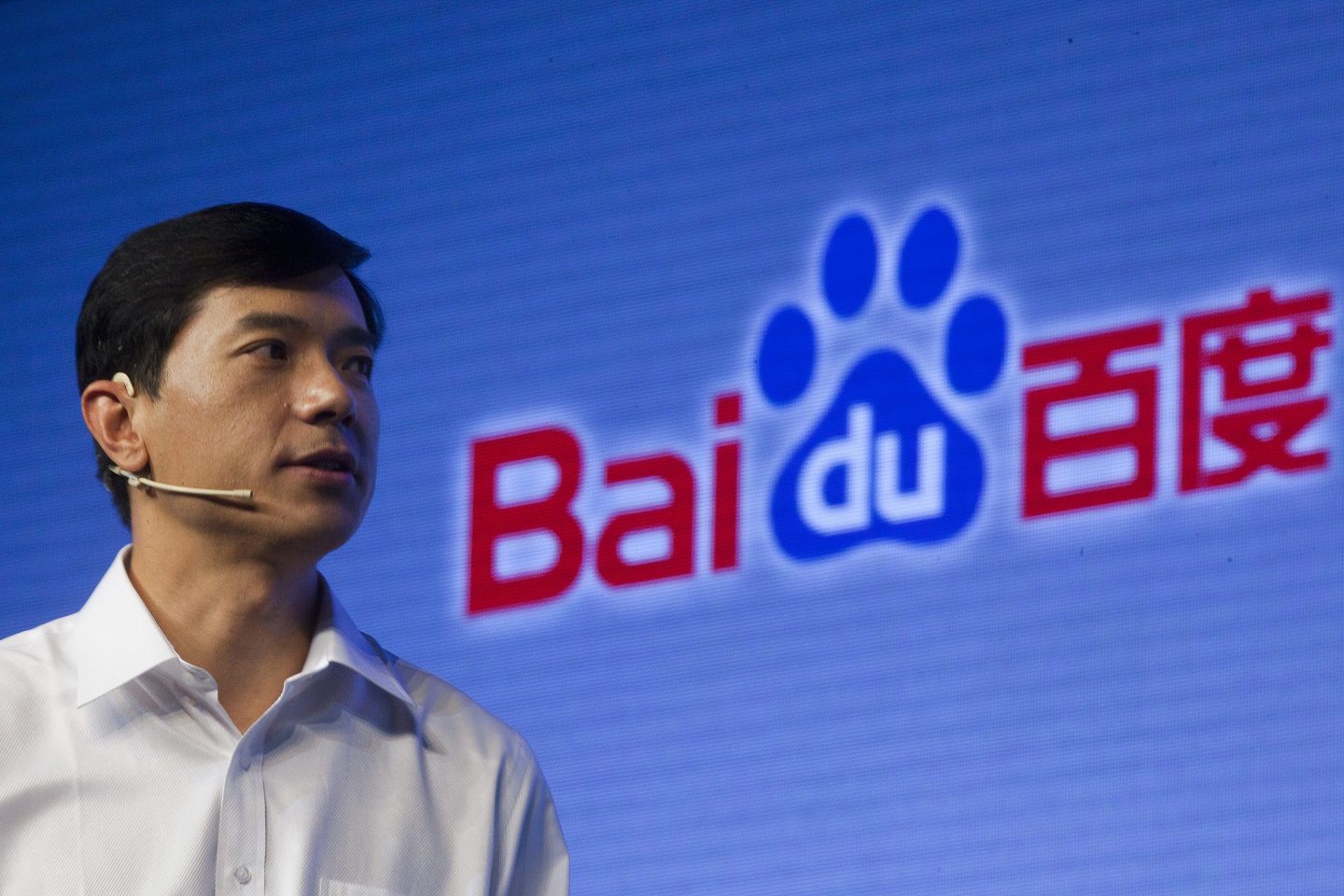
科技行業過于關注基礎人工智能(AI)模型,卻忽視了開發基于人工智能的應用程序,盡管這是一個有發展前景的業務領域。
百度的首席執行官李彥宏認為,大型科技公司正在開發驅動當前人工智能崛起的基礎模型,但它們應該將注意力放到其他領域。它們應該專注于基于這些基礎模型,開發人工智能驅動的應用。
李彥宏在深圳舉辦的行業活動上說:“不斷地重復開發基礎大模型是對社會資源的極大浪費。人工智能原生時代,我們需要100萬量級的人工智能原生應用,但是不需要100個大模型。”
基礎模型有數億甚至數十億個數據點,因此即使對成熟的科技公司而言,基礎模型的開發難度也極大,且成本高昂。
李彥宏表示:“大模型本身是一個基礎底座,類似于操作系統,那么最終開發者要依賴為數不多的大模型來開發出各種各樣的原生應用。”
百度并未答復置評請求。
中美兩國有多家規模最大的科技公司都已經發布了各自的基礎模型。掌控未來操作系統的競賽已經如火如荼地展開。
今年10月,百度發布其最新AI模型文心一言4.0,號稱可以與OpenAI最新發布的GPT-4相媲美。2022年11月,OpenAI率先發布人工智能驅動聊天機器人ChatGPT,它已經成為人工智能模型領域的標桿。百度的中國同行阿里巴巴也發布了人工智能模型,并全部開源,希望與Meta的Llama 2競爭。Meta已經成為人工智能領域開源創新的積極支持者。(如果有公司希望使用Llama 2模型,Meta依舊要求公司必須有超過7億月活躍用戶才能夠獲得特別許可。)亞馬遜(Amazon)的策略則略有不同,它一方面發布了自己的模型Titan,同時還支持以訂閱的方式使用其他開發者的模型。李彥宏認為,追趕這些在科技界占據主導地位的公司是不可能的,而且最終將徒勞無功。
他表示,開發人工智能應該效仿智能手機革命的做法。在智能手機普及并且變得價格實惠后,公司開始推出各種應用程序,有些應用程序憑借一己之力使其背后的開發公司變成了大型科技公司。他列舉了Uber和抖音(TikTok的中國姊妹版)的例子。
李彥宏稱:“直到今天,無論是中國也好,美國也好,我認為最好的人工智能原生應用還沒有出現。”
初創公司和大型科技公司都想進入這個市場,因此中國公司開發了大量相互競爭的人工智能基礎模型。擁有熱門通信應用程序微信的中國公司騰訊的一位高管表示,在中國“上百個大模型亂斗的局面已經開始”。分析師早已開始對所有競爭對手失去興趣,認為他們過于雷同。他們還擔心,面對根深蒂固的大競爭對手,新公司很難立足。百度發布人工智能模型當天,其股價下跌了3%。
李彥宏的觀點與OpenAI的首席執行官薩姆·奧爾特曼截然不同(編者注: OpenAI董事會已于11月17日意外解除了薩姆·奧特曼的CEO職務)。奧爾特曼認為,大模型將被針對特定使用案例定制的小模型取代。今年4月,奧爾特曼在麻省理工學院(MIT)舉行的一次活動上說:“巨大模型的時代接近尾聲,我們會用其他方式讓這些模型變得更完善。”
由于開發大模型難度大而且成本高昂,因此它們主要集中在少數科技公司手中,這引發了外界對人工智能開發透明度的質疑。斯坦福大學(Stanford University)的研究發現,美國10家規模最大的人工智能開發機構,均未能通過“透明度測試”。測試的目的是評價這些機構的數據來源以及它們如何使用這些數據和生成的模型。
中國政府也尋求對人工智能大模型的開發和使用進行監管。今年7月,中國國家互聯網信息辦公室發布了針對人工智能使用的政府法規,這是全球最早的相關法規之一。這些新規也可能會減少中國人工智能模型的數量。(財富中文網)
譯者:劉進龍
審校:汪皓
科技行業過于關注基礎人工智能(AI)模型,卻忽視了開發基于人工智能的應用程序,盡管這是一個有發展前景的業務領域。
百度的首席執行官李彥宏認為,大型科技公司正在開發驅動當前人工智能崛起的基礎模型,但它們應該將注意力放到其他領域。它們應該專注于基于這些基礎模型,開發人工智能驅動的應用。
李彥宏在深圳舉辦的行業活動上說:“不斷地重復開發基礎大模型是對社會資源的極大浪費。人工智能原生時代,我們需要100萬量級的人工智能原生應用,但是不需要100個大模型。”
基礎模型有數億甚至數十億個數據點,因此即使對成熟的科技公司而言,基礎模型的開發難度也極大,且成本高昂。
李彥宏表示:“大模型本身是一個基礎底座,類似于操作系統,那么最終開發者要依賴為數不多的大模型來開發出各種各樣的原生應用。”
百度并未答復置評請求。
中美兩國有多家規模最大的科技公司都已經發布了各自的基礎模型。掌控未來操作系統的競賽已經如火如荼地展開。
今年10月,百度發布其最新AI模型文心一言4.0,號稱可以與OpenAI最新發布的GPT-4相媲美。2022年11月,OpenAI率先發布人工智能驅動聊天機器人ChatGPT,它已經成為人工智能模型領域的標桿。百度的中國同行阿里巴巴也發布了人工智能模型,并全部開源,希望與Meta的Llama 2競爭。Meta已經成為人工智能領域開源創新的積極支持者。(如果有公司希望使用Llama 2模型,Meta依舊要求公司必須有超過7億月活躍用戶才能夠獲得特別許可。)亞馬遜(Amazon)的策略則略有不同,它一方面發布了自己的模型Titan,同時還支持以訂閱的方式使用其他開發者的模型。李彥宏認為,追趕這些在科技界占據主導地位的公司是不可能的,而且最終將徒勞無功。
他表示,開發人工智能應該效仿智能手機革命的做法。在智能手機普及并且變得價格實惠后,公司開始推出各種應用程序,有些應用程序憑借一己之力使其背后的開發公司變成了大型科技公司。他列舉了Uber和抖音(TikTok的中國姊妹版)的例子。
李彥宏稱:“直到今天,無論是中國也好,美國也好,我認為最好的人工智能原生應用還沒有出現。”
初創公司和大型科技公司都想進入這個市場,因此中國公司開發了大量相互競爭的人工智能基礎模型。擁有熱門通信應用程序微信的中國公司騰訊的一位高管表示,在中國“上百個大模型亂斗的局面已經開始”。分析師早已開始對所有競爭對手失去興趣,認為他們過于雷同。他們還擔心,面對根深蒂固的大競爭對手,新公司很難立足。百度發布人工智能模型當天,其股價下跌了3%。
李彥宏的觀點與OpenAI的首席執行官薩姆·奧爾特曼截然不同(編者注: OpenAI董事會已于11月17日意外解除了薩姆·奧特曼的CEO職務)。奧爾特曼認為,大模型將被針對特定使用案例定制的小模型取代。今年4月,奧爾特曼在麻省理工學院(MIT)舉行的一次活動上說:“巨大模型的時代接近尾聲,我們會用其他方式讓這些模型變得更完善。”
由于開發大模型難度大而且成本高昂,因此它們主要集中在少數科技公司手中,這引發了外界對人工智能開發透明度的質疑。斯坦福大學(Stanford University)的研究發現,美國10家規模最大的人工智能開發機構,均未能通過“透明度測試”。測試的目的是評價這些機構的數據來源以及它們如何使用這些數據和生成的模型。
中國政府也尋求對人工智能大模型的開發和使用進行監管。今年7月,中國國家互聯網信息辦公室發布了針對人工智能使用的政府法規,這是全球最早的相關法規之一。這些新規也可能會減少中國人工智能模型的數量。(財富中文網)
譯者:劉進龍
審校:汪皓
The tech industry is too focused on foundational AI models instead of the potentially booming business of developing artificial intelligence based apps.
Baidu CEO Robin Li believes major tech players, working toward building the underlying models powering the current rise of AI should direct their efforts elsewhere. Namely, they should focus on developing AI-powered applications built on top of the models.
“Constantly redeveloping foundational large models represents an enormous waste of social resources.” Li said at an industry event in Shenzhen. “In the AI-native era, what we need are AI-native applications at a scale of millions.”
Foundational models have hundreds of millions, even billions, of data points, which make them difficult and costly to develop for all but the most sophisticated tech companies.
“A large language model itself is a basic foundation akin to an operating system, but ultimately developers need to rely on a limited number of large models to develop various native applications,” Li said.
Baidu did not respond to a request for comment.
Many of the biggest tech companies in both China and the U.S. have already released their own foundational models. The race to own the operating system of the future is well underway.
In October, Baidu unveiled its latest AI model, Ernie 4.0, which it said could compete with OpenAI’s latest release, GPT-4. OpenAI became the benchmark for AI models when it debuted its ChatGPT AI-powered chatbot in November 2022. Alibaba, Baidu’s peer in China, also has its own model, which it made open source in an effort to compete with Llama 2 from Meta, which has become a vocal supporter of open source innovation in AI. (Meta still requires companies with over 700 million monthly active users to get a special license if they wish to use its Llama 2 model). Amazon adopted a slightly different strategy, releasing its own model Titan, while also offering access to models from other developers via a subscription. Catching up with these companies, among the most dominant in tech, is improbable and ultimately fruitless, Li argued.
He said AI development should follow in the footsteps of the smartphone revolution. After smartphones became popular and affordable, companies started introducing a wide variety of apps, some of which became major tech companies in their own right. He cited examples like Uber and Douyin, the Chinese version of TikTok.
“To date neither in China nor the US have we witnessed the emergence of the best AI-native applications,” Li said.
Chinese companies have created a number of competing AI foundation models, as startups and big tech firms try to elbow their way into the market. An executive from Tencent, the Chinese company that operates the popular messaging app WeChat, said the “war of a hundred models has begun” in China. Analysts have started to sour on all the rivals, which they consider too similar to each other. They’re also concerned new entrants will struggle to gain a foothold against entrenched, bigger players. Baidu’s stock dipped 3% the day it released its AI model.
Li’s comments take a different approach than those of OpenAI CEO Sam Altman, who speculated that ever bigger models might be supplanted by smaller ones tailored to specific use cases. “I think we’re at the end of the era where it’s gonna be these giant models, and we’ll make them better in other ways,” Altman said at an MIT event in April.
Because of the difficulty and expense of building these models, they are generally concentrated in the hands of a few tech companies, making them flashpoints for questions about transparency in AI development. A study from Stanford University found that 10 of the biggest AI developers in the U.S. all failed a “transparency test” meant to evaluate the origin of their data and how that data and the resulting models are used.
China’s government has also sought to regulate how large AI models are built and regulate how they’re used. In July, China’s Cyberspace Administration released what were some of the world’s first government regulations governing the use of AI. Those new rules could also serve to winnow the field of AI models in China.






